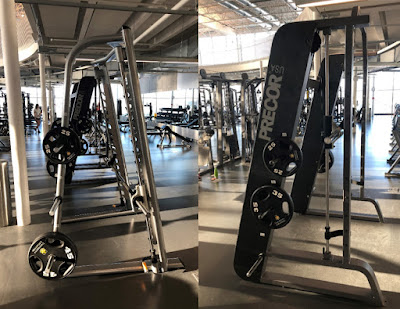Squatting knees over toes
Debunking a popular myth
For many years one of the primary cues given when teaching a squat was to keep the knees behind the toes because of the increased shear force it created on the knees. Is that still true? Will your knees explode if they pass the toes? Is it safe?Yes, having your knees past your toes while squatting is safe.
This common myth has been proven wrong by research in recent years. While the knees moving forward does increase the horizontal force at the knee, limiting the forward movement of the knees can put more stress on the lower back and increase the risk of injury.
Limiting the forward movement of the knees during squats can increase the risk of injury because it can cause a compensatory movement pattern, such as improved trunk flexion, that puts more stress on other areas of the body, such as the lower back or the hips.
When the knees cannot move forward, the hips and lower back must compensate by taking on more load. This can lead to poor form and increased stress in these areas, increasing the risk of injury.
Additionally, limiting the forward movement of the knees can also reduce the range of motion during the squat, which can limit the effectiveness of the exercise and lead to imbalances in the lower body muscles.
It's important to remember that squats involve multiple joints and muscles, and limiting one joint's movement can have a ripple effect on the rest of the body. People will have different squat variations that better suit their anatomy.
Therefore, there is no perfect way to stand and squat; allowing the knees to move naturally within the squat can help distribute the load more evenly and reduce the risk of injury.
However, it is essential to maintain proper form while squatting to avoid injury, including keeping your chest up, your back straight, and your knees aligned with your toes.
It would help if you avoided excessive forward lean and evenly distributed your weight across your feet.
For example, the orientation of the acetabulum of the hip will affect the foot placement required to allow more depth in your squat. Also, people with longer femurs may need more trunk flexion to keep the weight within the base of support (determined by your stance). If you have any concerns or questions about your squat form, it's always a good idea to consult a qualified fitness professional or physical therapist.
Limb lengths can affect squat technique in several ways. Regarding squats, the length of your limbs, including your legs and arms, can influence your range of motion, balance, and positioning throughout the movement.
Ways limb length impact squat technique
1. Range of motion
Individuals with longer legs may have a more challenging time reaching a full squat depth because the length of their femurs (thigh bones) can make it more difficult to get their hips below their knees. Maintaining proper form and balance throughout the movement can make it challenging.
2. Balance
The length of your arms can also affect your balance during the squat. Longer arms can help you maintain a more upright torso and provide better balance during the descent and ascent of the squat.
3. Foot positioning
The length of your lower legs can also affect your foot positioning during the squat. Individuals with longer lower legs may need to angle their feet slightly outward to accommodate their natural range of motion and avoid knee discomfort.
4. Bar placement
The length of your arms can also affect the placement of the bar during the squat. Individuals with shorter arms may struggle to grip the bar properly and maintain proper form, especially during heavier lifts.
The takeaway
Everyone's body is different, and limb lengths can impact squat technique in various ways. It's essential to experiment with other foot and hand positions and find what works best for your body type.
Consulting with a qualified fitness professional or physical therapist can also help develop proper squat techniques based on your anatomy.
Sources
Mannion AF, O'Riordan D, Dvorak J, Masharawi Y. The relationship between squat depth and multi-joint kinematics in young healthy males. BMC Musculoskelet Disord. 2012;13:14. doi:10.1186/1471-2474-13-14
Schoenfeld BJ. Squatting kinematics and kinetics: a review and critique. J Strength Cond Res. 2010;24(6):1642-1669. doi:10.1519/JSC.0b013e3181cb3d7d
Escamilla RF, Fleisig GS, Zheng N, et al. Effects of technique variations on knee biomechanics during the squat and leg press. Med Sci Sports Exerc. 2001;33(9):1552-1566. doi:10.1097/00005768-200109000-00020
Decker MJ, Torry MR, Wyland DJ, Sterett WI, Steadman JR. Gender differences in lower extremity kinematics, kinetics and energy absorption during landing. Clin Biomech (Bristol, Avon). 2003;18(7):662-669. doi:10.1016/S0268-0033(03)00087-2




Comments
Post a Comment